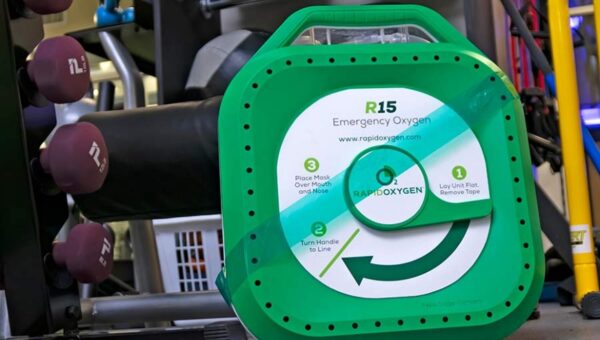
Standing Out is Key: The Importance of External Validators in the Nonprofit Sector

Written by Aileen Monahan, Capalino
Standing out is key in a crowded market, especially in the nonprofit sector which is filled with organizations striving for awareness and funding. With over 1.8 million registered public charities and private foundations in the nonprofit sector, it’s vitally important to set yourself apart, especially when trying to attract new donors. One important way to delineate yourself is by seeking the validation from a charity evaluator, such as the Better Business Bureau.
There are several external validators in the nonprofit space that analyze the financial and governance data of nonprofits with the goal of increasing transparency and sharing information. Donors turn to these validators to help them distinguish between organizations, verify whether nonprofits are valid organizations, and learn how donations are spent. They include:
- GuideStar: Database of over 2.7 million nonprofits that collects and analyzes nonprofit data and financials and assigns a rating.
- Charity Navigator: Database that implements a numbers-based rating system that assesses the Financial Health, Accountability and Transparency of over 9,000 charities and provides basic data on the rest of the 1.8 million U.S. nonprofits.
- Charity Watch: Charity watchdog and information service that provides letter grade ratings to charities.
One of the most notable external validators in the field is the Better Business Bureau (BBB). Founded over 100 years ago, the BBB aims to create an ethical marketplace community where buyers and sellers can trust each other. Specifically, the BBB Charity Accountability Program intends to uphold and recognize ethical businesses and charity standards, and best practices in New York and nationally.
The BBB has developed the Standards for Charity Accountability that incorporates 20 standards across three areas: governance, financials, and fundraising. The standards based approach allows for a more holistic and collaborative process with the goal of educating and informing the donor. If a nonprofit meets all 20 Standards, they are eligible for BBB Accreditation and a published charity report on the BBB database. This can help show legitimacy to donors to evaluate whether an organization has met the high standards.
The BBB Accredited Charity Seal is a widely recognized trademark and can be beneficial as a fundraising tool; there can be as much as a 13.5% increase in fundraising revenue with the use of the seal. According to a study by Nielsen, 73% of respondents were more likely to donate if a charity displays the BBB Accredited Charity Seal on an appeal.
The Charity Accountability Program considers a few key requirements in the Accreditation process: organizations that are 3 years old or more; organizations that publicly solicit donations; entities that have $250,000 or more in donations revenue; and organizations that are in the news or are of interest to the public.
Below are the 20 Standards of Charity Accountability:
- Board Oversight: A board of directors provides adequate oversight including reviews of the CEO’s performance, board approval of the budget, fund raising practices, establishment of a conflict of interest policy, and establishment of accounting procedures sufficient to safeguard charity finances
- Board Size: The board of directors must have at least five voting members
- Board Meetings: there is a minimum of three evenly spaced meetings per year, and at least half of them have to be in-person meetings
- Board Compensation: Not more than one or 10% (whichever is greater) of board members can be compensated
- Conflict of Interest: No related party transactions can take place if there is a conflict between one of the board members or staff resulting from any relationship or business affiliation
- Effectiveness Policy: The organization should regularly assess its effectiveness in achieving its mission at least once every two years
- Effectiveness Report: A report on the organization’s effectiveness and performance should be submitted to the organization’s governing body
- Program Expenses: The organization should spend at least 65% of its total expenses on program activities
- Fund Raising Expenses: The organization should spend no more than 35% of related contributions on fundraising, including donations, legacies, and other gifts received as a result of fundraising efforts
- Accumulating Funds: The organization should avoid accumulating funds that could be used for program activities. The charity’s unrestricted net assets available for use should not be more than three times the size of the past year’s expenses or three times the size of the current year’s budget, whichever is higher
- Audit Report: Audited financial statements should be made available to all upon request
- Detailed Expense Breakdown: The organization should include in their financial statements a breakdown of expenses that shows what portion of their expenses were allocated to program, fundraising, and administrative activities. If there is more than one program category, the organization should do a breakdown for each category
- Accurate Expense Reporting: the organization should accurately report its expenses including any joint cost allocations
- Budget Plan: The board of directors should approve the budget including projected expenses for program, fund raising, and administration activities
- Accurate Materials: The organization’s solicitation materials should be accurate and truthful and have a clear description of what the contributions are being sought for
- Annual Report: The organization’s annual report must be available to all upon request that includes: mission statement, summary of past year’s program service accomplishments, a roster of officers and members of the board of directors, and financial information (total income in the past fiscal year, expenses in the same program, fund raising and administrative categories as in the financial statements, and ending net assets) Tip: your 990 Form can serve as your annual report if it meets all criteria
- Website Disclosures: Include the annual report, the mailing address, the EIN, and electronic access to the 990 Form on the organization’s website
- Donor Privacy: There is a privacy policy on the organization’s website that explains what information is being stored and collected, if it will be shared, and the security measures in place to protect the donor’s personal information. There should be an opt-out check box available
- Cause Related Marketing: Clearly disclosing how the charity benefits from the sale of products or services that states that a charity will benefit from a sale. The promotion should state the portion of the purchase that will benefit the charity, the duration of the campaign, or any maximum or guaranteed minimum contribution amount
- Complaints: Organizations must respond promptly to complaints made to the BBB or Wise Giving Alliance
If your organization meets all 20 standards, you are deemed an Accredited Charity and eligible to license the BBB charity seal that can be used on solicitations and on an organization’s website. More information about the BBB Charity Accountability Program can be found at ny.give.org or newyork.bbb.org.
Capalino has a proven track record in providing nonprofit advisory services to many of New York City’s nonprofit organizations. To learn more, contact Executive Vice President Jeanne Mullgrav at jeanne@nullcapalino.com or 212.616.5832.



